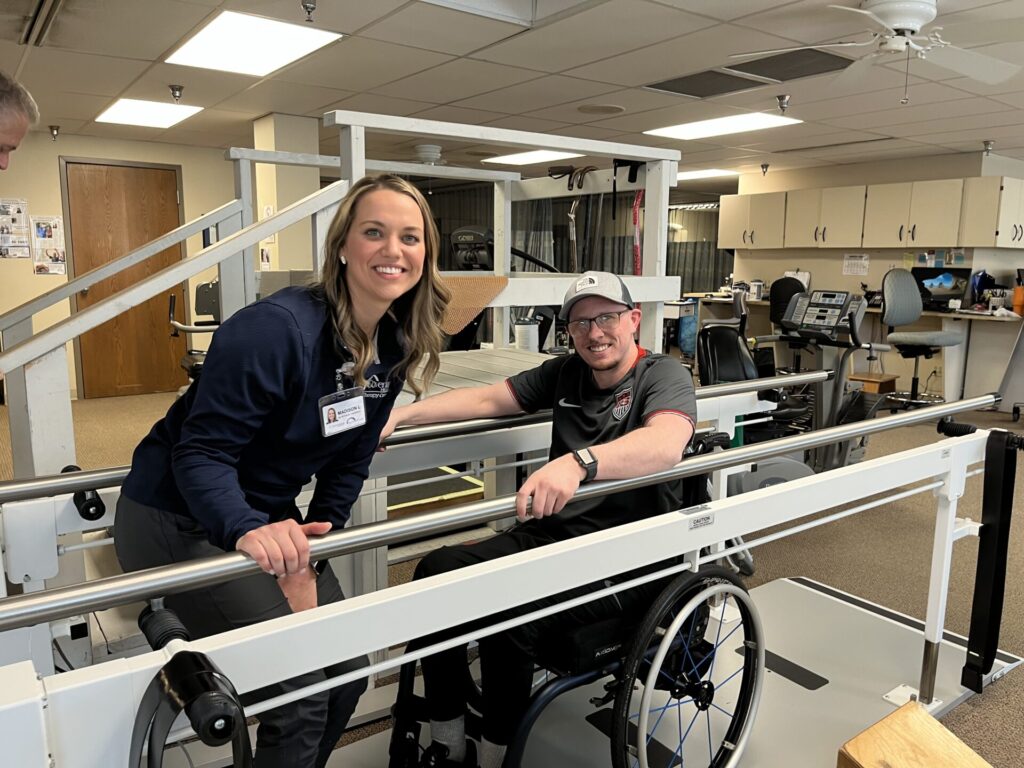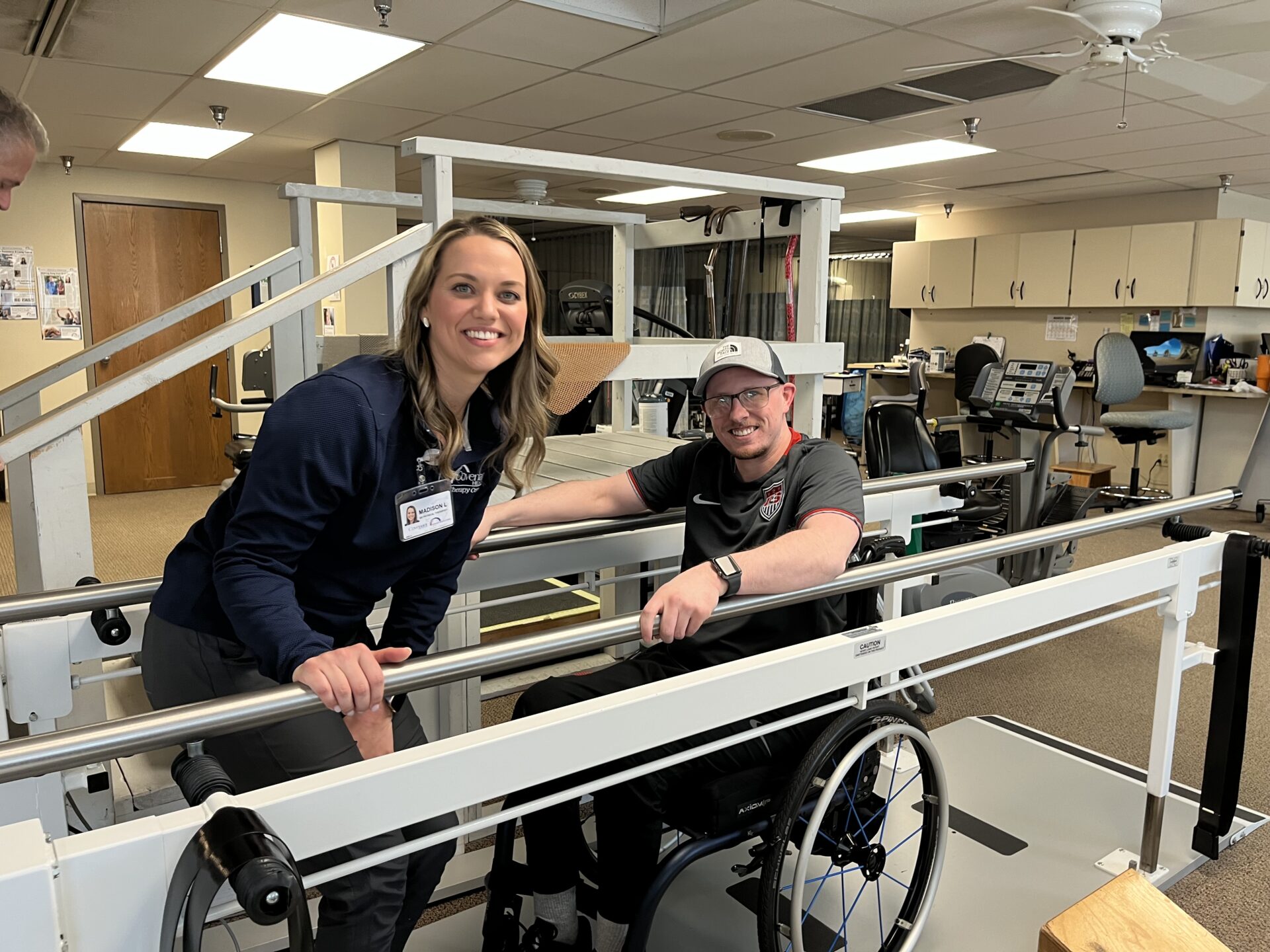- Find a DoctorDoctors by Specialty
- Cardiac Electrophysiology
- Cardiology
- Colon & Rectal Surgery
- Family Medicine
- Gastroenterology
- General & Vascular Surgery
- Gynecological Oncology
- Gynecology
- Infectious Disease
- Internal Medicine
- Interventional Cardiology
- Interventional Radiology
- Nephrology
- Neurology
- Neurosurgery
- Obstetrics & Gynecology
- Oncology
- Oncology & Hematology
- Orthopedic Surgery
- Otolaryngology
- Perinatology
- Psychiatry
- Pulmonary Medicine
- Radiation Oncology
- Rheumatology
- Sleep Medicine
- Thoracic Surgery
- Urology
- View All Doctors
- Our ServicesMedical Services
- Bariatric Services
- Behavioral & Mental Health
- Breast Care
- Cancer Care
- Critical Care
- Ear, Nose, & Throat
- Emergency Services
- Gastroenterology
- Glossary
- Heart Care
- Home Care
- Hospice & Palliative Care
- Imaging & Diagnostics
- Long-Term Care
- Nephrology
- Orthopedics
- Primary Care
- Rehabilitation Therapies
- Robotic-Assisted Surgery
- Sleep Services
- Spine Care
- Stroke Care
- Surgery Services
- Telehealth Services
- Urology
- Urgent Care
- Virtual Urgent Care
- Women’s Services
- Wound Care
- Our Locations
- Patients & Visitors
- About Us
Man Finds Relief from Hip and Back Pain with Joint Fusion Procedure
Brian Raines Patient Testimony
Brian Raines enjoys golf, fishing and spending time with his family. In 2001, Brian endured a fall from a six-foot ladder and his right hip took the brunt of the fall. He was in pain for several years and saw many doctors before he finally limped into the office of Lawrence Maccree, DO.

It was a painful road before he arrived. Brian estimates he underwent numerous X-rays, MRIs, physical therapy sessions, chiropractor and acupuncture visits before receiving a steroid injection into a specific joint that made a difference.
Receiving a steroid injection into his sacroiliac joint revealed the source of his pain. He was referred to Dr. Maccree for further treatment. Brian was diagnosed with SI joint arthritis; his fall had caused changes at the joint level over time.
The sacroiliac joint, or SI joint, is the joint between the sacrum and the ilium bones of the pelvis, which are connected by strong ligaments.
Dr. Maccree specializes in diagnosing and treating neurological and musculoskeletal issues of this nature. After thorough diagnostic testing, evaluation and conservative treatments, he performed a percutaneous SI fusion procedure.
What is SI disease?
Sacroiliac disease, also referred to as sacroiliitis, occurs when the sacrum (or tailbone) and ilium (part of the pelvis) becomes inflamed or irritated. The location where these two parts intersect is at the bottom of the spine, so irritation can cause pain with the smallest movement. Dr. Maccree reports sacroiliitis can develop when someone falls or lands with their weight too heavily on one leg.
Dr. Maccree’s goal is to find the root of the problem and try to solve it. He explains that 80 percent of people suffering from SI joint pain can find relief with manipulation through chiropractic, osteopathic or physical therapy. He emphasizes that surgery is only recommended when a patient does not respond to other treatments or only finds temporary relief. Because of Brian’s injuries and sustained pain he endured over many years, he was rendered a good candidate for the SI fusion procedure.
Two Surgeries, Eight Years Apart
Dr. Maccree performed the percutaneous SI joint fusion surgery on Brian’s right side at Methodist Medical Center of Oak Ridge in 2012. The patient describes the difference before and after surgery as “night and day.”
Brian returned to work and continued to heal. He resumed past times like golf, fishing and cutting wood. However, a few years later, he felt that familiar pain slowly creeping back – this time on his left side.
“The first surgery was amazing in how much it helped. It was clear I had a problem that went away, but I started feeling that same familiar pain on the other side.” – Brian Raines
Eight years after his first procedure, Brian came back to Dr. Maccree, who performed the SI joint fusion surgery on his left side in July 2020 at Methodist Medical Center.
About his physician, he says, “Dr. Maccree is great. He makes things easy to understand, answers your questions, and has a good bedside manner.”
Dr. Maccree says for people experiencing back pain, there is hope.
“Joint fusion surgery is not the only option for joint pain. If you are diagnosed with sacroiliitis or other musculoskeletal issues, don’t continue to suffer in pain, tell your doctor so he or she can get you to the right place.
It’s a matter of finding the right people who can look at you and diagnose problem and address it. There is hope to finding pain relief.” – Dr. Lawrence Maccree
What is Sacroiliac Joint Fusion?
A sacroiliac fusion may be recommended for patients who experience sacroiliitis, or sacroiliac disease, which is inflammation or irritation of the sacroiliac joint.
Dr. Maccree explains that some patients who have sustained an injury or have rheumatoid disease may only find temporary relief from these methods but for the most part continue to suffer. That is when he recommends the SI joint fusion procedure.
With this minimally-invasive approach, Dr. Maccree uses an X-ray machine to insert a wire like device through the bone into the sacrum, and clears a safe path for metal pieces. He drills through the path inserting three large cages, bolts or screws from one side to the other. The ilium and sacrum are now tied together and fused into place with several bolts and screws.
Back Pain? Could Be Your SI Joint
According to Dr. Maccree, one in five people experiencing back pain may actually have inflammation in their sacroiliac joint, a small part of the pelvis where the iliac bone meets the sacrum, or tailbone.
For more information about our neurosurgical services or to schedule an appointment, please call (865) 835-5460.
























